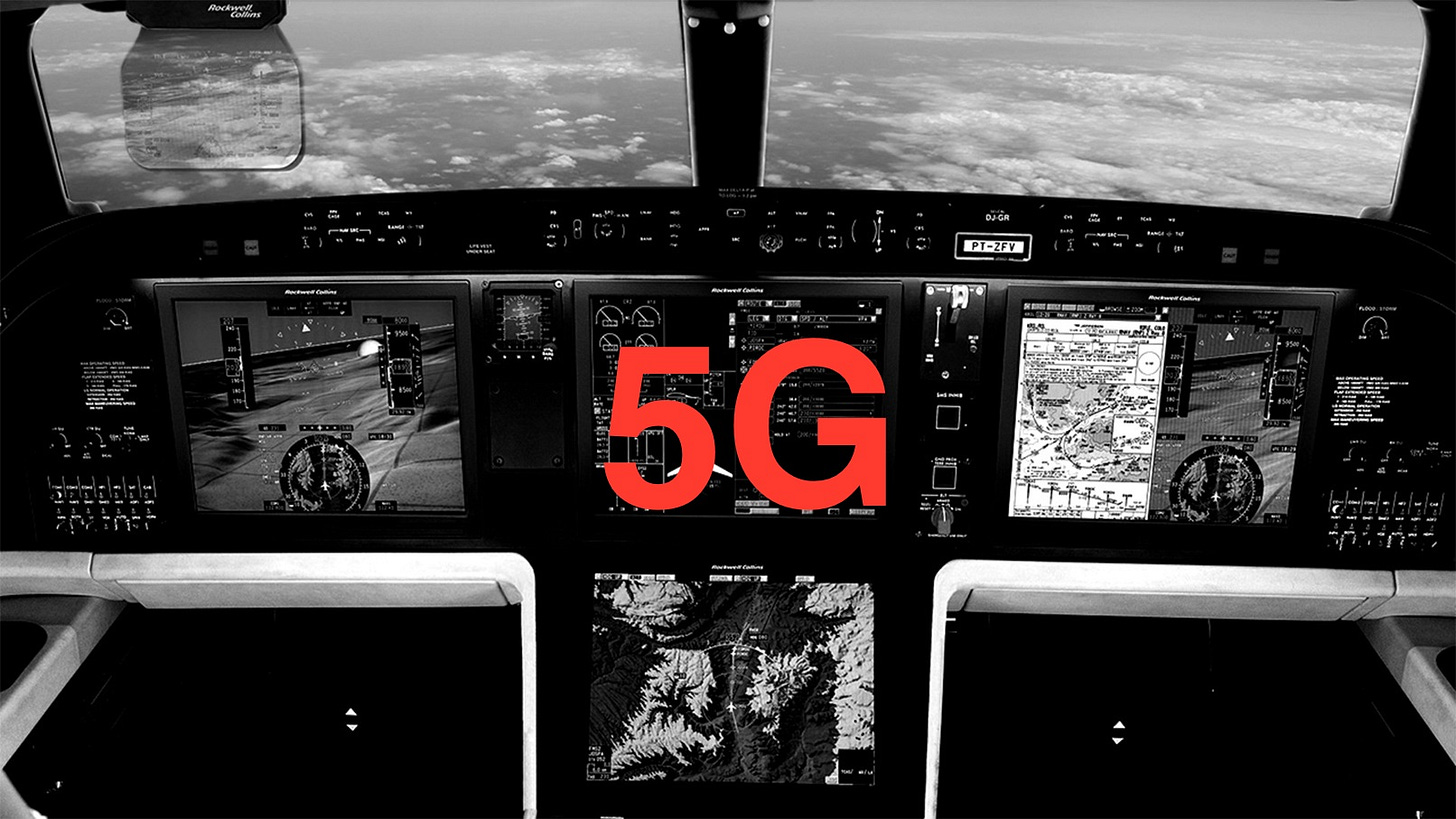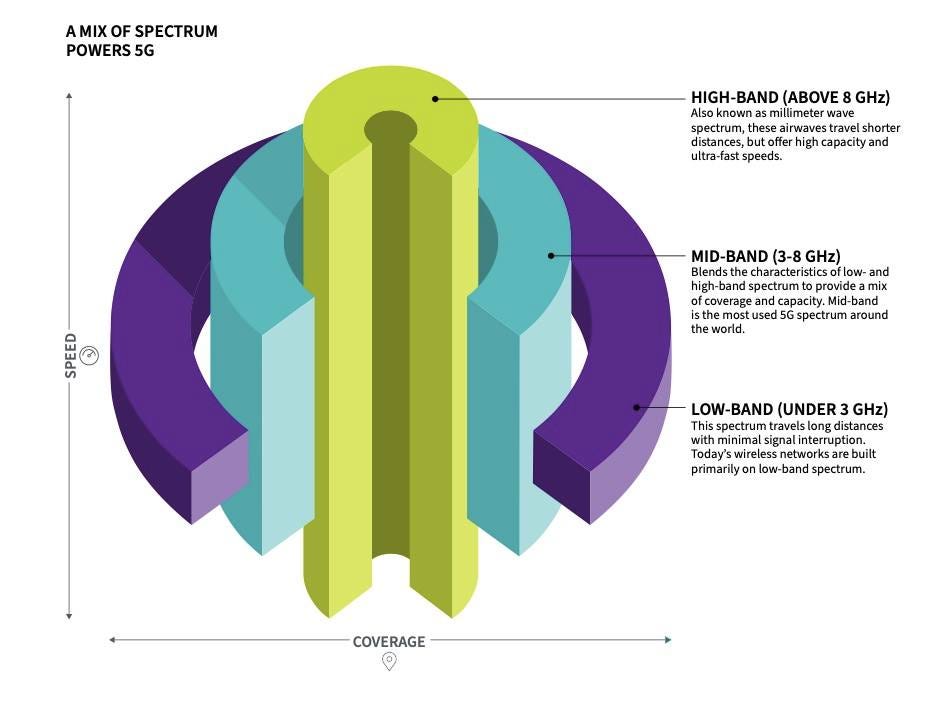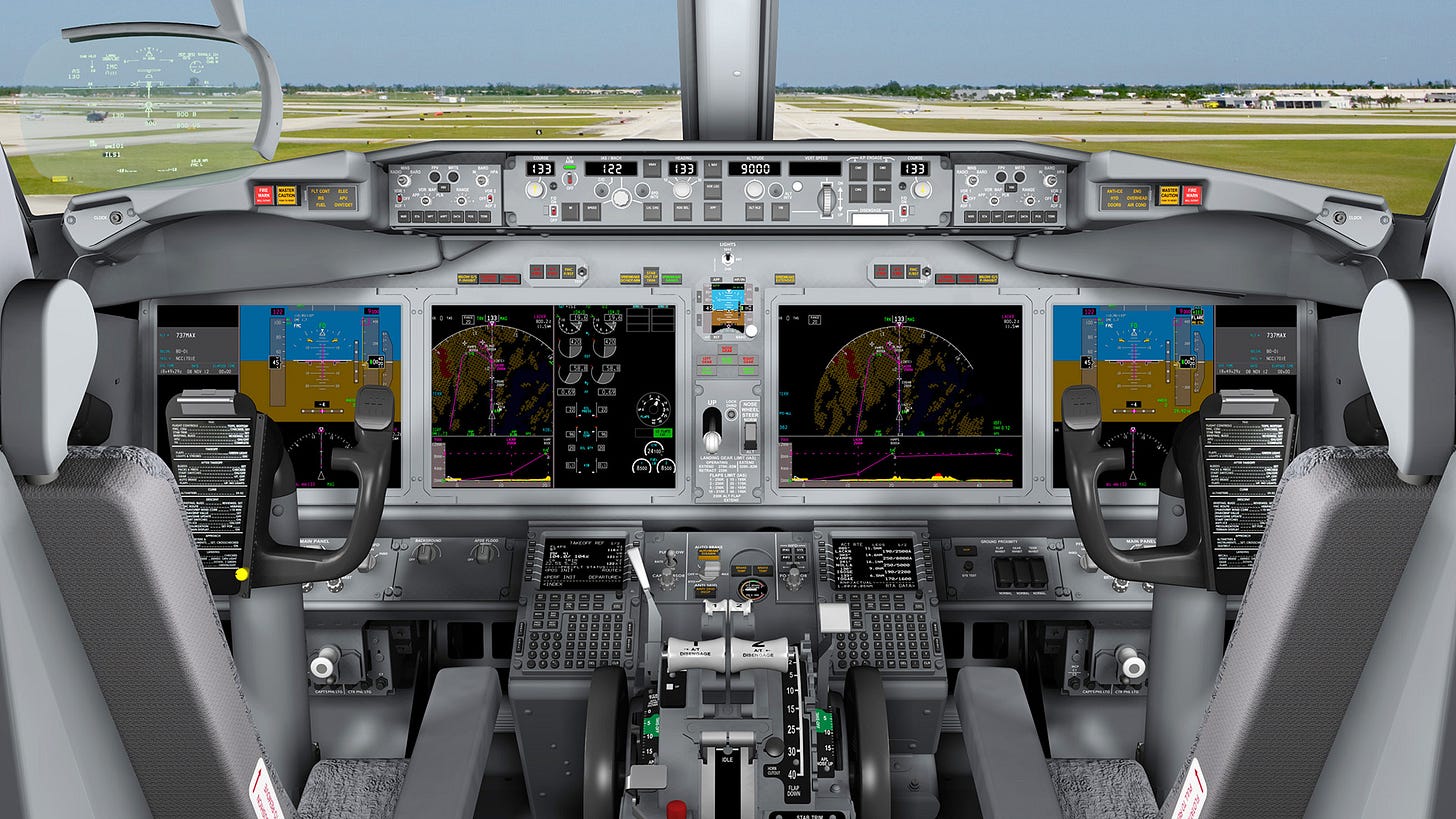UPDATE: Can the 5G cellular signal from your phone crash a jetliner?
Rollout of new service stopped by two big carriers

The deployment of enhanced 5G cellular service will roll out in January. The FAA has taken action which could restrict aircraft as that service is deployed.
This week the FAA issued an order, referred to as an Airworthiness Directive, ordering pilots to not use an instrument at low altitudes if a 5G C-Band system is operating at or near an airport (explanation in earlier story below). The result is that during low visibility (fog) landings some flights might have to divert to another airport, according to the FAA. That could be costly for airlines and passengers.
FAA PUSHES BACK
The FAA still isn't buying the cellular industry contention that aircraft will not be impacted by this new 5G band. The FAA says in its AD, "no information has been presented that shows radio altimeters are not susceptible to interference caused by C-Band emissions permitted in the United States."
Which airports will be impacted? The FAA isn't sure so it will issue notices if an airport in one of 46 markets is deemed to become a risk when 5G is installed and activated. It will rely on the cellular carriers to provide data to determine which airports will have C-Band base stations.
Here is the earlier story explaining the issues and frequencies:
November 21, 2021
The promise of 5G cellular service on your phone and other devices is that your life will be changed in so many ways. With its faster speeds, 5G is expected to allow us to connect cars to cities, further automate factories, provide immersive entertainment, and, among other predictions, make searching on your phone a whole lot faster.
The grand rollout of 5G by Verizon and AT&T, originally set for December 5th, just stopped. The cellular companies slammed on the brakes because the aviation industry and its regulator are worried that the new signals could interfere with landing jetliners, possibly leading to a catastrophic crash. That’s a serious concern.
A portion of a CTIA video outlining the advantages of 5G cellular service. (Credit: CTIA)
WHAT IS THE FREQUENCY?
This is about radio frequencies, two industries, two Federal agencies, and interference. I don’t want to turn you into an engineer, but we need a bit of background here. Your cellphone is actually a radio transmitter-receiver. It sends signals to towers and receives other signals back. The cellular companies use a lot of different radio frequencies to make that work. The broader the band, the more available frequencies, the faster your phone can communicate.
For 5G, the carriers really need to be in what is known as the mid-band (also known as the C Band). You don’t need to understand radio frequencies (gigahertz, etc), the C Band is between 3.7 GHz and 4.2 GHz.

Spectrum bands used for cellular service. (Credit: CTIA)
LANDING AID
This entire debate is about the landing of jetliners and other aircraft. In the cockpit is a radar (or radio) altimeter. This instrument uses radio signals that tell pilots how high they are off the ground as they approach the runway. Those altimeters work on frequencies 4.2 GHz to 4.4 GHz. That is the problem. The end of the frequency block for 5G is 4.2 GHz. That is also the beginning of the frequencies for altimeters. The two blocks of frequencies are adjacent at 4.2 GHz. Aviators worry a 5G signal (that’s you talking to your best friend) could interfere with the altimeter and the pilot would get incorrect data. You know the rest.

A Honeywell Radar Altimeter for use in jetliners. (Credit: Honeywell)
Last year the Trump administration auctioned off this chunk of the C Band frequency to cellular carriers for $80 billion oner the objections of aviators. The cell companies prepared to roll out 5G, but disagreements between the radio bureaucracy (Federal Communications Commission FCC), and the aviation regulator (Federal Aviation Administration FAA) burst into the public debate leading to the pause of deployment until January 5th, 2022.
ADJACENT FREQUENCIES
The question: is it safe to have cell phones and towers transmitting near those 4.2 GHz aircraft altimeters? It’s a debate that has been going on for years. The FAA and the aviation industry cite a study by a group known as RTCA. It is a private, nonprofit association that studies and proposes standards for the aviation world. An RTCA study found that 5G in this mid-band, “…will cause harmful interference to radar altimeters on all types of civil aircraft…”, including passenger jetliners.

Aviation industry graphic calling for more testing of 5G frequencies. (Credit: AIA)
The FCC and cellular carriers say that is not true. When approving the sale of frequencies, the FCC said it set aside a small buffer (spectrum separation) next to the 4.2 GHz and those steps, “are sufficient to protect aeronautical services.” The head of the cellular industry association says, “there appears to be no scientific or engineering basis to justify a delay…” of 5G. The cellular industry says 40 other countries use these frequencies with not a single report of “interference.”
BATTLING BUREAUCRACIES
That is the standoff holding up full 5G deployment. The FCC and the cell carriers say there are leaving a small buffer of bandwidth at 4.2 GHz to protect jetliners. The airlines, jet makers, and the FAA are saying “we are not sure.” They want more information about transmissions near their altimeters frequency.

Artist rendering of cockpit showing avionics package. (Credit: Collins)
Along with the technical questions there are some politics here. The auction was conducted by a Trump Administration FCC that set aside FAA concerns. The FAA under the Biden Administration, however, is taking action.
POLITICIANS STEP INTO DEBATE
The battle escalated Friday when the democratic leaders of the House Transportation committee supported the FAA and called on the FCC to cooperate. In a letter to the head of the FCC, the Representatives said, “The FCC’s and the telecom industry’s approach of 'deploy now, fix later' is anathema to the strong safety culture,” of the aviation industry.
What is the solution? I’ve learned that modern altimeters have additional sheathing around the antenna and cables connecting to other instruments, which should protect them from the 5G signals. But some in the aviation world question whether older altimeters could be affected and whether the buffer below 4.2 GHz is sufficient.
The two sides and the two agencies have about 5 weeks to figure this out.
(Cover photo credit: Collins Aerospace)




